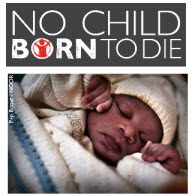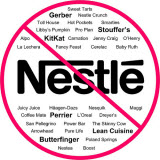Breastfeeding During Take-Off and Landing
 Saturday, November 8, 2008
Saturday, November 8, 2008 A while ago I wrote a series of posts on breastfeeding on an airplane. In one of the posts, I provided information on airline breastfeeding policies and was baffled by Air Transat's comment that breastfeeding during take-off and landing would not be possible due to the holding position required by Transport Canada. The link that they gave to me seemed to describe the brace position that would be used in case of an emergency, not just the regular position for take-off and landing. So I followed up with Transport Canada to find out what they had to say.
First, Transport Canada reiterated the fact that it is safest to buy an extra seat for the baby and use a child restraint:
Let me begin by stating that Transport Canada highly recommends the use of an approved child restraint for all phases of flight. The use of a child restraint system provides the greatest degree of protection for the infant/child and its use during flight will help in case of unanticipated turbulence. Also, by using the child restraint on board the aircraft, it will ensure that it will be available for use at the passenger's destination.
Then, the e-mail went on to explain the way to hold a lap baby in the event that parents choose not to purchase a seat for their child under 2 years old:
The infant should be held sitting upright (so that his/her back is in a "vertical" position) and face the adult. A larger infant may need to straddle the adult's hips; The adult should place one arm around the infant's torso and head and place the other arm against the seat back ahead of the adult, and rest his/her head firmly on this arm; and The adult should then lean forward so the infant is held in the space formed between the adult and the forward seat back. It is very important for the adult to lean forward as much as possible to protect the infant; the closer the adult is to the seat back ahead, the better. An infant should not be placed across the adult's lap (in a horizontal position) as this could result in the infant's head impacting the arm rests during lateral aircraft movements.
Transport Canada and Air Transat also provided me with a link to this image of what the required position looks like:
Now, back to Air Transat. They indicated that it would not be possible to breastfeed during take-off and landing due to the holding position that is required by Transport Canada. I beg to differ - you can breastfeed during take-off and landing! Take a look at that picture. That baby's mouth is pretty close to the mother's breast. There is no reason whatsoever that breastfeeding should not be possible in that position, unless mom and baby are not comfortable nursing in that position for some reason. Smaller babies may need to be propped up somewhat by a pillow and it may be difficult with babies that do not yet have good head control, but most babies from about 3 months to 2 years should be able to breastfeed in this position.
That said, I want to remind my readers that you shouldn't offer up more information than is needed to the flight attendant. When he or she tells you about the required brace position, nod and smile. No need to explain that you plan to breastfeed in that position. If you don't make a bid deal out of it, they are also likely to not make a big deal out of it.
Further information on related regulations and advisories can be found in these links:
- Commercial & Business Aviation Advisory Circular 0155 - Brace Positions for Impact
- Flight Safety Foundation Cabin Crew Safety - Positions Brace Passengers for Impact To Reduce Injuries and Fatalities - 1988
- Canadian Aviation Regulation 605.28 - Child Restraint System
- Canadian Aviation Regulation 537.203 - Child Restraint Systems
- Transport Canada Passenger T.I.P.S. and Frequently Asked Questions



















 add to del.icio.us
add to del.icio.us digg it
digg it share on facebook
share on facebook
Reader Comments (14)
[...] interested in nursing on the ascent and keeps her ears from popping. It helps to be aware of the recommended holding position for infants during take-off and landing so that you can practice nursing in this position if you are not used to it. Note: Some airlines [...]
I breastfeed with my DD straddling me like that all the time. It's great because I only have to maneuver my shirt, whereas in the cradle position I need to maneuver my shirt AND hold her. It's so much easier when she holds herself up!
I agree - nod and smile and don't offer any other information. It's how I've handled the many flights we've done with our baby.
That position looks ridiculous. Me thinks someone is a tad too worried about lawsuits.
I agree with tophat. This is the way I handle my baby when breasfeeding.
I'm confused. What about breastfeeding your older child, who has his/her own seat, during takeoff and landing? Last time we were on a plan, I was buckled in and my 3 year old daughter was buckled into a regular seat. I just leaned over and nursed. How does that situation relate to this policy?
@ Trish - this isn't meant to address older children that have their own seats. It is for infants that are traveling on mom's lap.
With my son I have always taken that same stance , with flight attendants and seat mates. I never ask permission at most I will say " Oh don't worry he'll conk right out after we nurse" and I just get smiles back.
[...] A family oriented airline, they welcome nursing mothers to breastfeed their infants from the comfort of their seat anytime during the flight. Mothers are welcome to nurse their infant in the manner that they are comfortable, whether they use a blanket to cover the infant or not. They indicated that some restrictions may apply during take-off, landing, or any other moment when passengers are directed to fasten safety belts by a crew member because it is not possible to breastfeed an infant due to the holding position recommended by Transport Canada in those situations (Note: I beg to differ! See my post on Breastfeeding During Take-Off and Landing) [...]
[...] interested in nursing on the ascent and keeps her ears from popping. It helps to be aware of the recommended holding position for infants during take-off and landing so that you can practice nursing in this position if you are not used to it. Note: Some airlines [...]
[...] Breastfeeding During Take-Off and Landing: Describes the required holding position for take-off and landing and explains how you can breastfeed in that position. [...]
Wish I'd found this post before! Unfortunately that position wouldn't have worked for me when my babes were younger (had to support their head AND my breast), but I had the same questions when I wrote "Boobs On A Plane"... http://havebabywilltravel.com/Blog/2009/10/06/boobs-on-a-plane/
Thanks for your wonderful information. I'm coming up on a trip to move oversease with my 3 month old and was concerned but with this advice, I feel much more confident that things will go pretty smoothly.
I personally will agree with you that when we mom's are travelling with infants, its kind of impractical to place them in restraints. For example, my 4 month old baby got very restless when I got him seated in the adult chair for a while. Maybe its the new environment, the people and the plane's sound which makes them kind of fearful and insecure, so I tried holding him upright as much as I could against my chest but holding a baby in that position for long can get tiring.